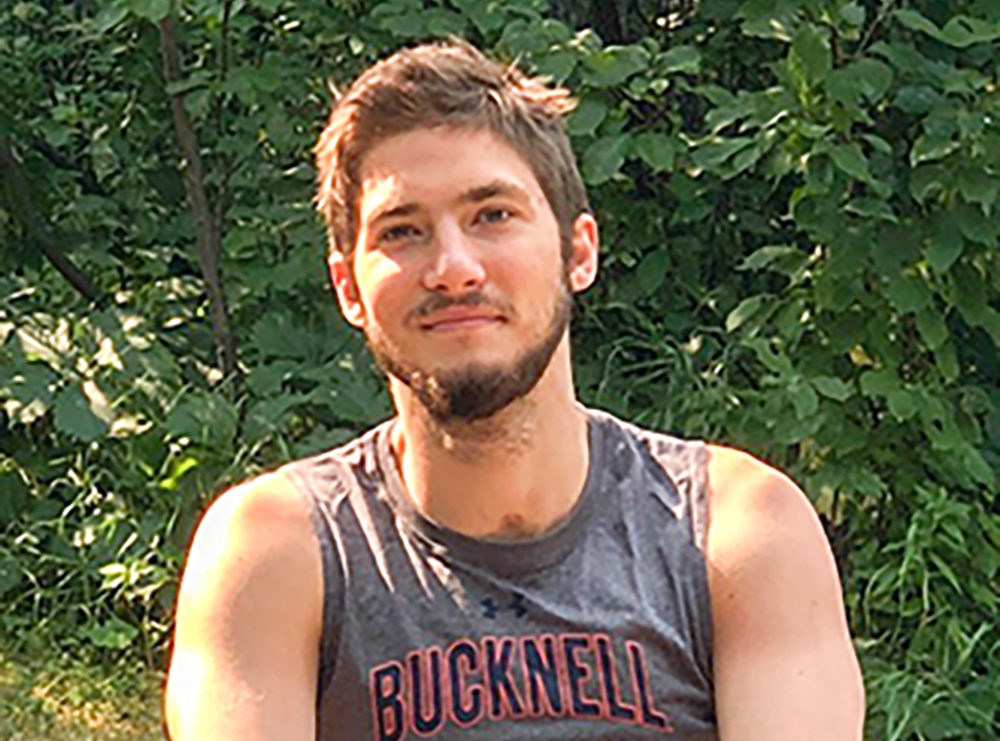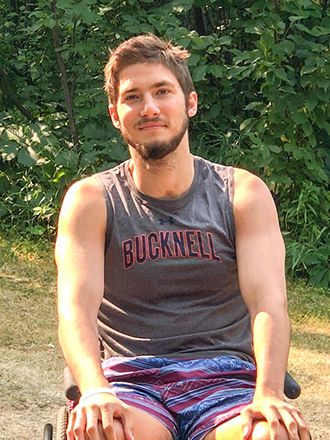
Peter Schreiner, 27, a scuba diving instructor from New York, recently finished the 2018 New Balance 5th Avenue Mile — a modest race for most runners but a huge accomplishment for someone whose spine was fractured. Peter made his 44-minute journey down Fifth Avenue thanks to an exoskeleton — a device that allows those with spinal cord injuries to stand and walk. It had been a long road to this moment — a road that started with reconstructive surgery at the hands of Dr. Roger Härtl.
Back in September of 2017, Peter was in Florida with some friends for a funeral when they had a terrible car accident . An ambulance rushed Peter to a local emergency room, where it was discovered that he had shattered his T5 vertebra, located between his shoulder blades.Doctors in the emergency room stabilized him, but he didn’t stay there for long. “I was only there for a day and then decided I wanted to be in New York for my surgery,” Peter recalls.
The broken bone damaged Peter’s spinal cord, leaving him paralyzed from the waist down. Any spinal cord injury can be devastating, but the first step to Peter’s recovery was to repair that fractured portion of his spine. Fortunately, when he arrived at the intensive care unit at NewYork-Presbyterian/Weill Cornell Medical Center (a Level 1 Trauma Center), unbeknownst to him he was in the hands of one of the country’s best spine surgeons.
“Peter was in bad shape,” Dr. Härtl remembers, “but to have any kind of recovery from the spinal cord injury entails a fix of the spine itself first.” Peter doesn’t remember much from the surgery, saying, “I was delirious but later I was comforted knowing that I had such an experienced and skilled guy working with me!”

The surgery was complicated. That shattered vertebra required reconstruction through fusion, which often involves open surgery, with long recovery times, but Dr. Hartl was determined to get Peter started on his rehabilitation as quickly as possible. “I fused his spine at the T5 using newer, minimally invasive techniques,” says Dr. Hartl. “This repaired the bone, but it didn’t require the large incisions or muscle retraction typically used in conventional fusion. The benefit of going minimally invasive is the faster recovery time. The sooner Peter could start rehabilitation, the better.” By the end of the surgery, Dr. Härtl had put a rod in Peter’ spine and cleaned the bone fragments off his spinal cord.
Peter was happy to meet Dr. Härtl after the surgery, saying “It was really cool to meet the guy who had fixed my back. He definitely made me confident that the surgery had gone well!” The surgery stabilized Peter’s back; now he had a chance to attend rehabilitation.
“I’m thankful to Dr. Härtl for giving me a chance to get better,” says Peter, who transferred to Mt. Sinai Hospital for exoskeleton rehab. Within a year of the accident, Peter made his successful journey down Fifth Avenue.
Peter is now hoping to expand his treatment. “I’m looking into other therapies and clinical trials,” he says. “I want to diversify my approach to recovery.”
For anyone who suffers a spinal cord injury, Peter has some sage advice: “Start fighting for your life when you get out. The surgery is just the first rung on a very tall ladder.”
More about the Spinal Trauma Program at NewYork-Presbyterian/Weill Cornell Medical Center